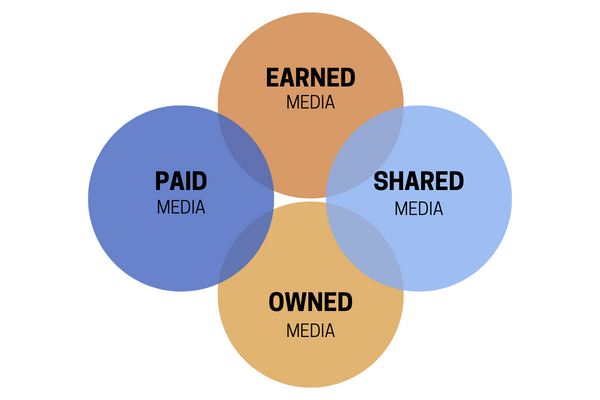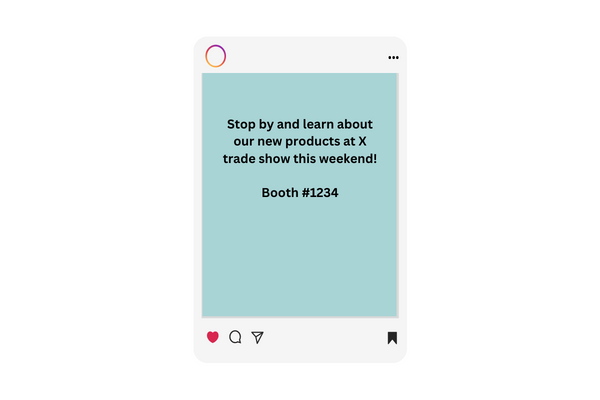When planning for a trade show, many exhibitors focus on what customers will see at the show – not on what they’ll hear in the days, weeks and months before. But thinking about how you will market your brand to customers before they visit your booth is just as important, and maybe even more so.
It’s like planning a party –– you can have the greatest entertainment, food and drink, but if people don’t know about it, they can’t be there to experience it.
That’s why pre-show planning is so important. Here are three ways to market your booth – and your brand – before the show.
1. Use your trade show’s marketing services
It might sound simple, but you should start your pre-show planning by knowing what marketing services and resources the trade show is offering to exhibitors.
Having that understanding will help you shape your outreach strategy. Ask these questions well in advance: Will you be included in program books or signage? How often will you be tagged in social media? Are you invited to private events? Will you be provided with a list of attendee names and emails?
Knowing this information up front will help you shape your pre-show marketing plan – including how much to spend on print or digital advertising and what you will share on social media.
2. Create a targeted campaign
When it comes to marketing your brand and any planned activities at the show, think about PESO.
PESO has nothing to do with currency, but it can certainly pay off. The model, used by marketing and communications professionals, stands for Paid, Earned, Shared and Owned media – an integrated mix of tactics that will let customers know about your brand and what they can see at your booth.
Here’s what to know about PESO and how you can leverage it in your pre-show planning:
• Paid media refers to paid advertising – things such as print and digital ads that can be purchased in trade show programs, industry publications or online. Paid advertising is most effective when it can complement your other marketing tactics. For instance, if you will be creating posts for social media about incentives you have planned, consider “boosting” or paying to promote the content. This will give you an opportunity to reach people who normally don’t follow your page.
• Earned media is also known as PR or media relations. This can include press releases that are sent to journalists – a great way to let people know what to expect when they visit your booth. Will you be showcasing a new product? Do you have any activities or incentives planned? Will you be offering a unique service? If so, you might consider using earned media in your pre-show marketing.
• Shared media refers to the content that your customers will share with others, usually via social media. This can include posts, blogs or videos that you put on your Facebook, Instagram, Linked In or other social pages. Shared media can help you gain additional visibility – and new customers – for your booth and your brand.
• Owned media is the content you own – for example, the photos, infographics, blogs or videos that you place online, on social media or in e-newsletters. The power of owned media is that you control the message. It’s how you can fully explain the benefits of your product, or why people should visit you at the show. And the stronger or more interesting your owned content, the more likely others will share it.
Other Tips:
Whether you plan to use a large mix of tactics or just a few, consider the frequency and consistency of your pre-show marketing. Start months in advance to let customers know you will be at the trade show – and continue letting them know through the final hours and during the event.
3. Create an ‘experience’
Even in our everyday lives, more people are talking about wanting to have experiences instead of material possessions. The same applies to what they want when they visit a trade show booth.
Branded promotional items like pens and stress balls still can be used at trade show booths, but today’s customers are looking for experiences. That’s why you should think like an experiential marketer.
Experiential marketing – sometimes called engagement marketing – creates hands-on experiences. Used effectively, experiential marketing can build interest in your booth – and in your product or service – and leave customers feeling connected to your brand.
There are many ways to use experiential marketing, and many depend on your budget. It could be as simple as putting a few massage chairs in your booth, or offering a taste challenge with chocolates, coffee or even your own product. You could set up carnival-style games such as floating rubber ducks or a prize wheel. You even could set up a photo booth or create a virtual reality area.
Conclusion
Whatever you decide, experiential marketing should be one the first things to consider because you will want to promote it your pre-show marketing.
When it comes to pre-show marketing, there’s no one right way to do it. The only wrong way is to not do it at all. Start planning early to build interest and excitement in your booth – and ultimately, in your brand.





